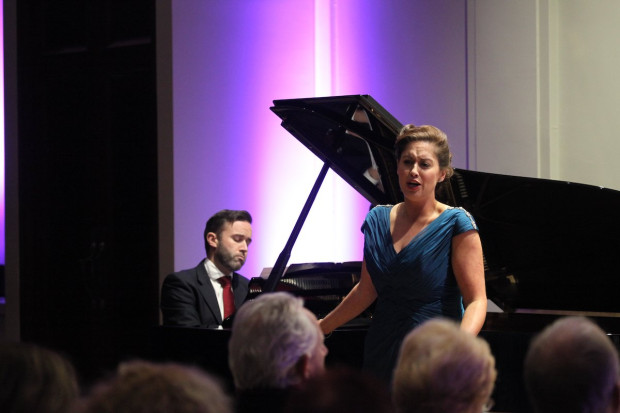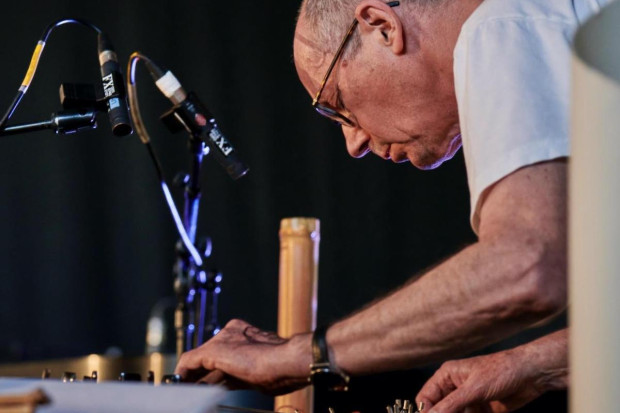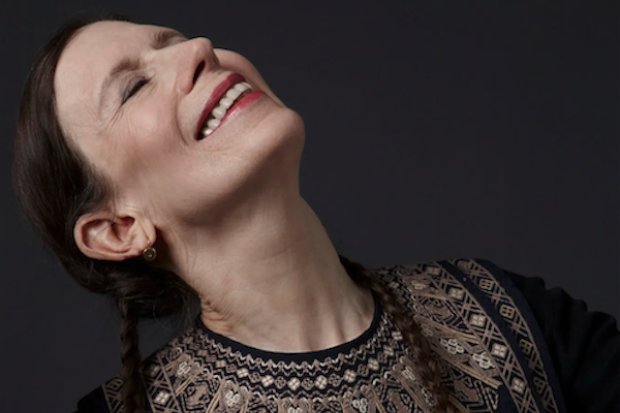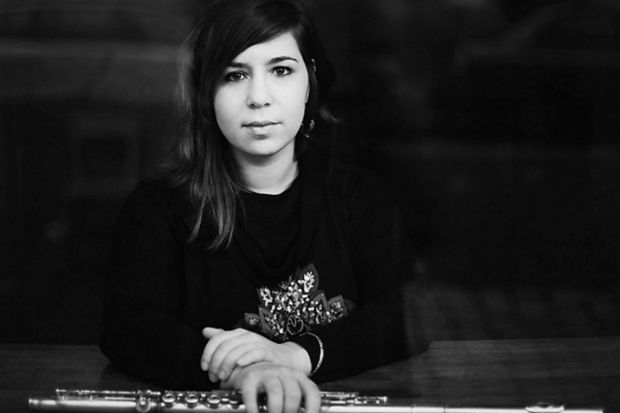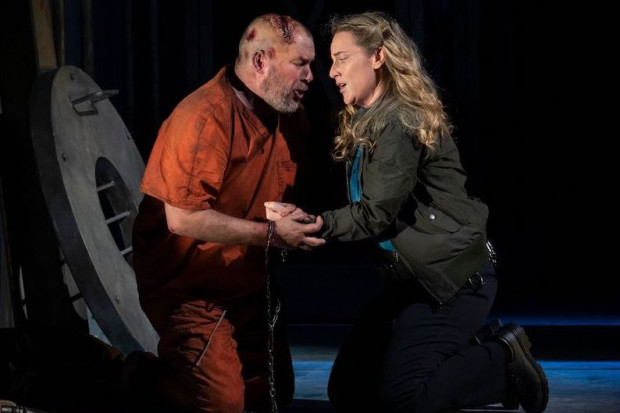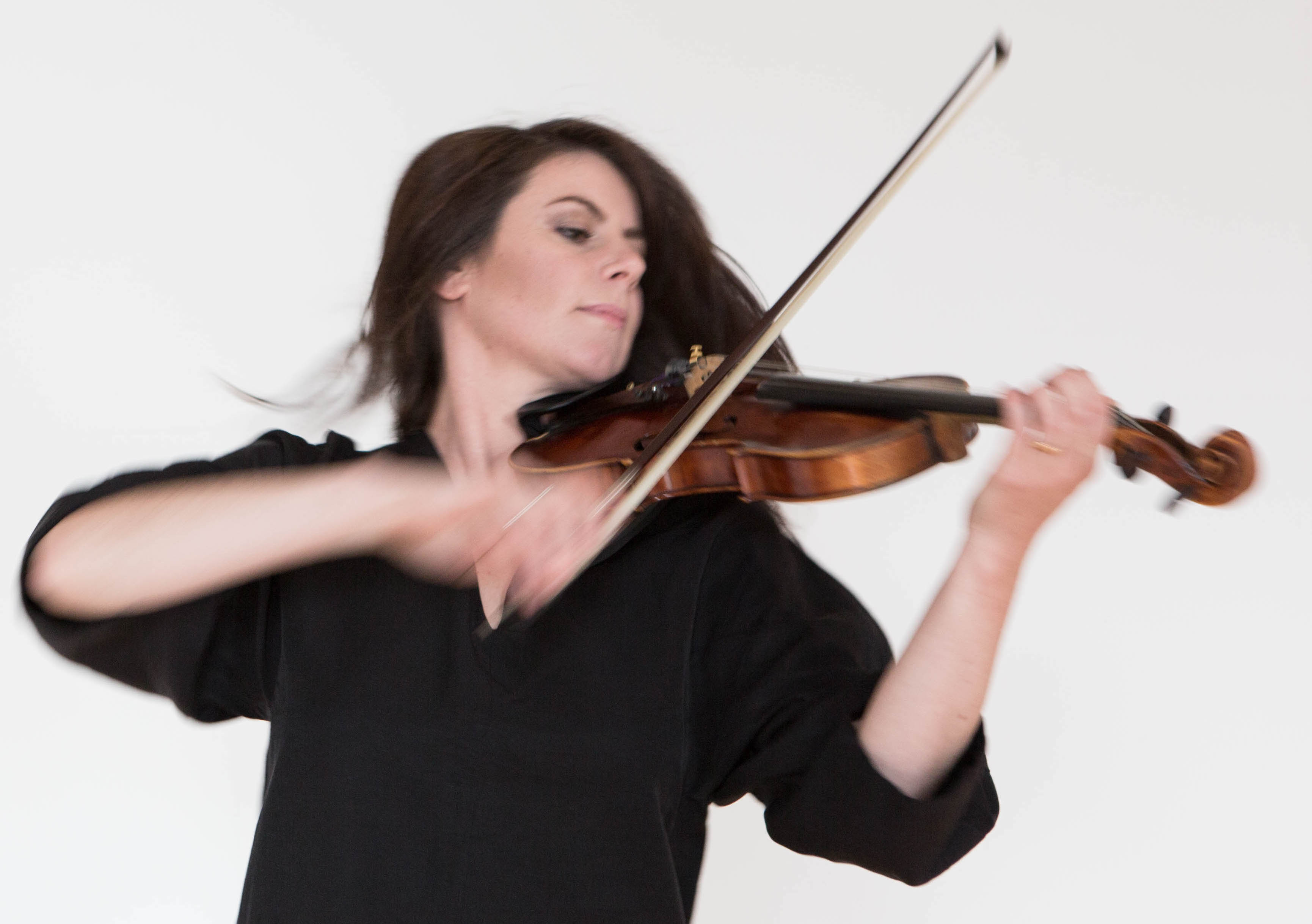
Larissa O'Grady (Photo: Kate Nolan)
Demonstrating the Breadth of Irish Contemporary Styles
In Dublin City, at the Hugh Lane Gallery, a trio of contemporary noon concerts is serving as either a farewell to summer or a welcome to autumn, depending on your preference. The first of these took place last Sunday 3 September with violinist Larissa O’Grady performing a concert of works written for her as part of the Contemporary Music Centre’s Contemporary Artists Network project.
The Hugh Lane has a tradition of excellent, varied free concerts on Sundays, and the audience knows it: the sculpture room, with its walls and pillars painted black for an upcoming Andy Warhol exhibit, was full to capacity. (Given that it was free admission, I was tempted to take the chance of showing up at the door, but on the train I reserved a ticket as a precaution. I got the last one.)
A concert like this serves as much as anything to showcase the breadth of music being created in Ireland under the rubric of ‘contemporary’. This short concert saw six works incorporating styles from the very focused to the very varied; influences sometimes international, others domestic.
Flooding in Pakistan
Judith Ring’s music has a direct emotionality welcome in the often abstract world of contemporary music, and her powerful Swept Through the Floods sees that characteristic in full force. Inspired conceptually by last year’s flooding in Pakistan, and musically by recordings of O’Grady, the piece takes a mournful melody on a journey over electronic cluster chords. The three sections, which Ring introduced as Before, During and After, see a build and fall of intensity linked by a continuous harmonic movement.
A different sort of intensity informed Anselm McDonnell’s Rusted Sugar, a work about the chemical process of caramelisation. This was about as literal a musical description as possible, beginning with particulate notes – falling staccati on the violin and electronic plinks – and ending with syrupy glissandi and thick chords. McDonnell’s music can be bright as fluorescent light, drawing on the textural richness in upper harmonics and microtones.
The natural world saw further exploration in Robert Coleman’s Capturing Sound. Coleman joined O’Grady on stage, processing a field recording he’d made of a Wicklow woodpecker that informed and interacted with the rapid tremoli on the violin. And David Bremner’s Salient Memories was in some ways the most abstract piece performed and in others the most evocative. Based on the way we filter and sort, in his words, the ‘plethora of information’ we hear every day, this was a series of peaks and troughs of clear electric activity.
Setting Olive Verte
For Fiona Linnane, words and the voice are at the centre of the compositional process, and her witty and entertaining Would Be Poetess sets extracts of a poem about publishing poetry published in 1901 by Olive Verte, which O’Grady speaks aloud while playing the violin. (If you haven’t heard of Verte, you’re not alone; Linnane discovered her browsing the library of Kinnitty Castle Hotel, and the top result for her name on Google is Linnane seeking more information about her!) Verte’s poem is flowery and sometimes a little tongue-in-cheek, and Linnane took a liberal approach to the setting, shifting it from third- to first-person and raising more than a few chuckles as she described her poems ‘published at my own expense, which gave me great delight’. There was a lovely direct simplicity to the way music (and sometimes action) were incorporated into the poetry: ‘Over here, and over there’ O’Grady reads, pointing with her bow and strumming a chord with her left hand.
Action was also central to Jenn Kirby’s Body Fragmented, for which O’Grady wore a motion sensor connected to an animated stick figure of a violinist, which performed on a screen beside her. The aural analogue for this was substantial reverb provided by a pedal, so that between sound and vision elements the work felt like a duet for a violinist and her shadow. This piece was the most stylistically varied, starting with almost silent bowing, but flowing smoothly to almost Baroque harmony and even a quote of Radiohead’s ‘No Surprises’.
Remarkable versatility
Given that each of the pieces was written for and in collaboration with O’Grady, it should be no surprise that she played them with aplomb. But just as the concert was a showcase for the breadth of Irish contemporary styles, it also demonstrated O’Grady as a performer with remarkable versatility and skill, from the whispered bow strokes opening Kirby’s work to the in-your-face chords closing McDonnell’s; from the rapid finger-and-bow work of Bremner’s piece to the generous lyricism of Ring’s.
Over the next fortnight, the Hugh Lane’s series will continue with Caitríona O’Leary and Boris Bergman playing Satie, Cage and Scriabin (10 September), and another contemporary concert with Alex Petcu and Caitríona Frost (17th). Though we may be moving into the darker part of the year, concerts like these keep bright spots in the weekly calendar.
Visit https://hughlane.ie/whats-on.
Subscribe to our newsletter.
Published on 7 September 2023
Brendan Finan is a teacher and writer. Visit www.brendanfinan.net.










